Has the new OnePlus 11 caught your eye? We don’t blame you; it has many of the qualities we want and expect from a OnePlus phone, including the latest processor, a finely tuned camera, and an alert slider. But what about the OnePlus 10T? It wasn’t released that long ago, and it also has strong specifications, so which one should you choose? We’re going to compare the OnePlus 11 versus the OnePlus 10T and help make that difficult decision a little easier.
OnePlus 11 vs. OnePlus 10T: specs
| OnePlus 10T | OnePlus 11 | |
| Size |
163 × 75.37 × 8.75mm |
163.1 x 74.1 x 8.53mm |
| Weight | 203.5 grams | 205 grams |
| Display | 6.7-inch Fluid AMOLED | 6.7-inch Super Fluid AMOLED |
| Screen resolution |
2412 x 1080 (394 pixels per inch) |
3216 x 1440 pixels (525 pixels per inch) |
| Screen refresh rate | 60Hz/90Hz/120Hz | 1Hz to 120Hz |
| Operating system | Android 12, OxygenOS 12.1 | Android 13, OxygenOS 13 |
| Storage space | 128GB, 256GB | 128GB, 256GB |
| MicroSD card slot | No | No |
| Processor | Qualcomm Snapdragon 8+ Gen 1 | Qualcomm Snapdragon 8 Gen 2 |
| RAM | 8GB, 16GB | 8GB, 16GB |
| Camera | 50-megapixel main, 8MP ultrawide, 2MP macro, 16MP front | 50-megapixel main, 48MP ultrawide, 32MP Portrait Tele Cam, 16MP front |
| Video |
4K at 30/60 frames per second, 1080p at 30/60 fps |
8K at 24 frames per second, 4K at 30/60/120 fps, 1080p at 30/60/240 fps |
| Bluetooth version | Bluetooth 5.3 | Bluetooth 5.3 |
| Ports | USB-C | USB-C |
| Fingerprint sensor | Yes, in-display | Yes, in-display |
| Water resistance | Yes (IP54) | Yes (IP64) |
| Battery | 4,800mAh | 5,000mAh |
| Wired charging | Up to 125W | Up to 80W |
| Wireless charging | No | No |
| App marketplace | Google Play Store | Google Play Store |
| Colors | Moonstone Black, Jade Green | Titan Black, Eternal Green |
| Price | $649 | $699 |
| Buy from | OnePlus, Amazon, Best Buy | OnePlus, Amazon, Best Buy |
| Review | OnePlus 10T review | OnePlus 11 review |
OnePlus 11 vs. OnePlus 10T: design and durability
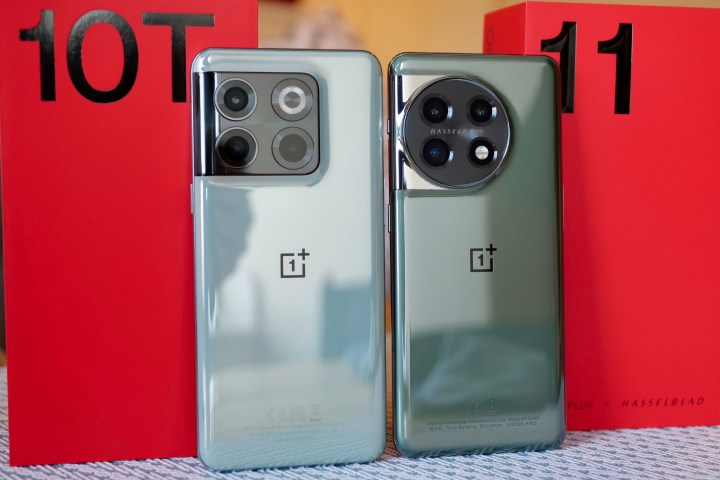
The OnePlus 11 comes in two colors, Titan Black and Eternal Green, while the OnePlus 10T comes in two very similar hues, called Moonstone Black and Jade Green. The two black versions have a subtle texture, which OnePlus describes as being inspired by the texture of basalt rock, recalling the Sandstone finishes used on early OnePlus phones. The OnePlus 11’s Eternal Green is darker than the 10T’s Jade Green, but both feel the same to the touch, and both phones are made from Gorilla Glass 5 regardless of the color.
Compare the dimensions, and both phones are almost identical. Hold them both, and they are completely different, and it’s the OnePlus 11 that feels like the far more expensive, better built, and more comfortable device. This is due to its curved screen and the stainless steel chassis, putting it far ahead of the OnePlus 10T’s plastic chassis and flat screen. The OnePlus 11 is quite slippery though, and you’ll want to put it in a case.
Perhaps the most challenging design feature is the camera module. On the OnePlus 10T, the square module sits neatly on one side of the back panel, with a curved edge to match the side of the phone. It looks similar to that of the OnePlus 10 Pro and is still a classy, attractive feature. The OnePlus 11’s module is a circle set in a curved section that also curves with the side of the phone. It’s more challenging, visually, and takes some getting used to. It’s not ugly, just different.
OnePlus put Gorilla Glass 5 on the front and back of the OnePlus 10T, but in addition to changing the chassis from plastic to metal for the OnePlus 11, it upgraded the screen’s protection to Gorilla Glass Victus. It also secured an IP64 water-resistance rating too, which indicates the OnePlus 11 will be more durable than the OnePlus 10T. Yes, the alert slider is back for the OnePlus 11 after disappearing from the OnePlus 10T, but it’s only a tiny part of what makes the latest model vastly superior to the 10T.
Winner: OnePlus 11
OnePlus 11 vs. OnePlus 10T: screens and sound
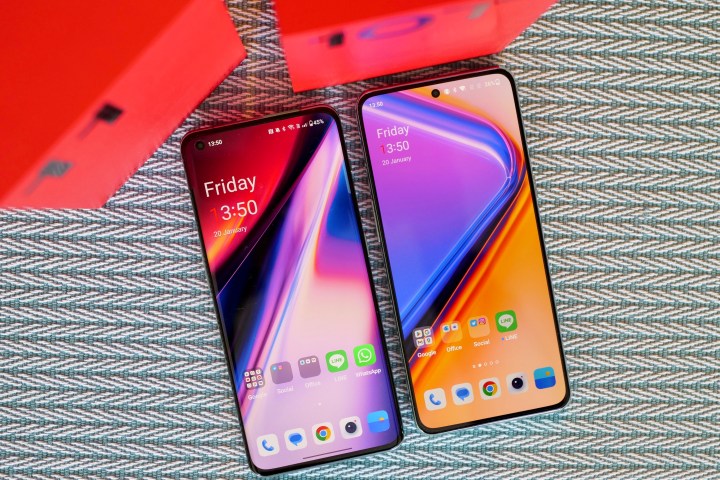
Look at the two screens side by side, and it’s clear the OnePlus 11 has the superior display. It’s brighter and crisper, with more natural colors and less reflection. The specification is better anyway, and it does translate into real-world benefits. This includes touching and swiping on the screens, as the OnePlus 11 is more tactile and pleasant to use. The OnePlus 10T feels cheap.
Both screens have a maximum 120Hz refresh rate, but only the OnePlus 11 can dynamically move between 1Hz and 120Hz, leaving the OnePlus 10T to shift between 60Hz, 90Hz, and 120Hz, which may affect power consumption. The OnePlus 11 also has an LPTO 3 panel, which OnePlus says makes it even faster to switch between refresh rates, and therefore means it more efficient.
OnePlus has added certification for Dolby Vision on the OnePlus 11, which joins Dolby Atmos on both phones, and both have dual speakers too. It’s hard to hear much of a difference between them, but the OnePlus 11 does have a slightly more controlled, less tinny sound. Haptics generated by the O-Haptics system have been improved on the OnePlus 11, where the feedback is switchable between Crisp and Gentle settings. There is a less “hollow” feel than the OnePlus 10T, and the taps are quieter too.
Winner: OnePlus 11
OnePlus 11 vs. OnePlus 10T: performance and charging

There are slight differences between the battery and charging systems in these two OnePlus phones, but in the real world, it doesn’t equate to a massive change. The dual-cell batteries have almost the same capacity — 4,800mAh in the OnePlus 10T and 5,000mAh in the OnePlus 11 — and neither phone has wireless charging. Both use OnePlus’ proprietary SuperVOOC wired charging system.
In the U.S., the OnePlus 10T has a 125-watt charging speed, which charges up the battery from flat to full in about 20 minutes. The OnePlus 11’s 80W charger takes about 25 minutes. In the U.K., the power delivered is different. The OnePlus 11 has a 100W SuperVOOC charger that also takes about 20 minutes to fully charge the battery, while the OnePlus 10T has a 150W charging system that recharges the phone in just 19 minutes.

What does all this mean? Both phones have very fast charging that is faster than the vast majority of the competition — especially in the U.S. Few people will consider the five minutes saved by choosing the OnePlus 10T over the OnePlus 11 a game-changer. Both use the OnePlus Battery Health Engine (BHE) to manage temperatures and performance, which OnePlus says will help the battery retain its power and fast charging ability for at least three years. The OnePlus 11 has even earned TÜV Rheinland approval for charging safety.
The OnePlus 10T was the brand’s “performance” model when it was released in mid-2022, and uses the excellent Qualcomm Snapdragon 8+ Gen 1 processor with a choice of 8GB or 16GB of LPDDR5 RAM. Things have moved on since then, and the OnePlus 11 uses the latest Snapdragon 8 Gen 2 processor with either 8GB or 16GB of LPDDR5X RAM. The 10T is a speedy smartphone, but the OnePlus 11 is wonderfully smooth and breathtakingly fast. The change in RAM, plus an upgrade from UFS 3.1 to UFS 4.0 for the storage, means the 11 is faster in general use, and able to run more apps at the same time than the 10T.
Winner: OnePlus 11
OnePlus 11 vs. OnePlus 10T: cameras
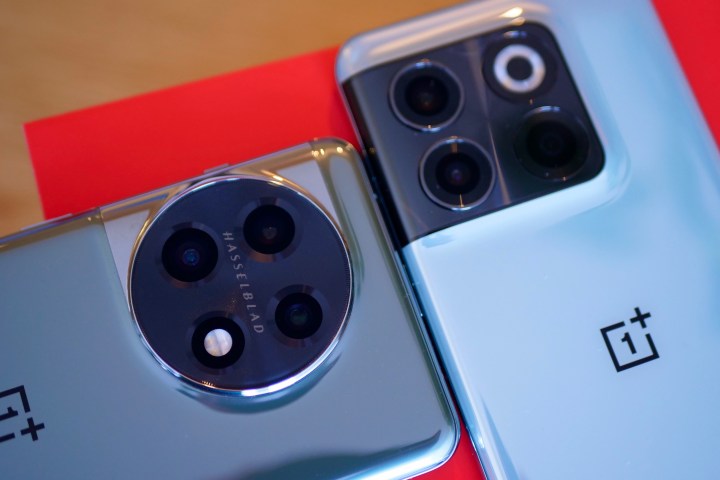
Leaving aside the alterations to the camera specifications, the biggest difference between the two camera systems is the Hasselblad tuning on the OnePlus 11. The camera maker works with OnePlus on the software, adding special color calibration techniques, filters, and camera modes to give your photos a unique look. This is entirely missing from the OnePlus 10T.
The other notable change is the 32-megapixel Portrait Tele Camera on the OnePlus 11, which replaces the mostly useless 2-megapixel macro camera on the OnePlus 10T. The new portrait camera promises to help take DSLR-like portrait shots with natural bokeh, all specially tuned by Hasselblad to mimic its XCD 30mm and 65mm lenses. There’s also a 13-channel spectral sensor to ensure the colors in the OnePlus 11’s photos are realistic.
OnePlus has wisely dropped the poor quality 8MP wide-angle camera it fitted to the OnePlus 10T, and opted for a higher resolution 48MP wide-angle for the OnePlus 11. If you shoot video, then the OnePlus 11 records at up to 8K resolution at 24 frames per second (fps), while the OnePlus 10T tops out at 4K at 30 fps or 60 fps. The main IMX890 camera also adds DOL-HDR technology for less blurry, brighter, and more colorful video in low light through a new AI Highlight Video Mode.
The OnePlus 10T’s camera was a disappointment, and although Hasselblad’s work with OnePlus is still in the early stages, there are benefits to the partnership that enhance the camera, so it’s a worthwhile feature. Our experience with the OnePlus 11’s camera so far is very positive, and if you’re at all interested in taking photos, it’s definitely the phone to choose.
Winner: OnePlus 11
OnePlus 11 vs. OnePlus 10T: software and updates
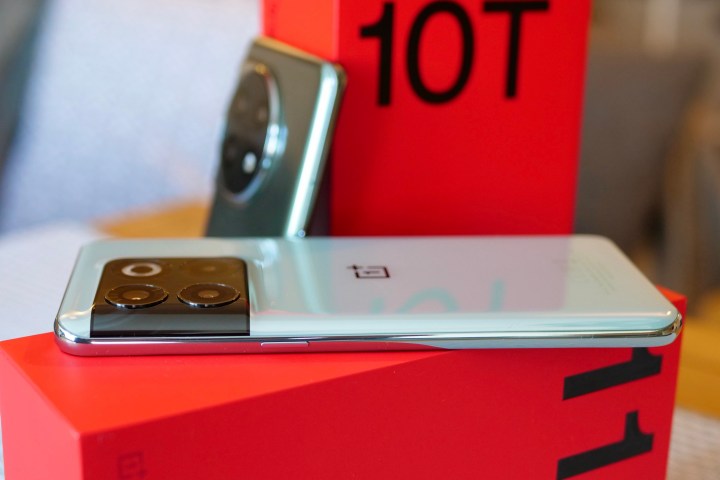
The OnePlus 10T launched with OxygenOS 12, which is based on Android 12. At the time of writing, our phone has received a few updates to take it to OxygenOS 12.1. This means it’s still on Android 12, and that puts it behind many competing smartphones, including the Google Pixel 7. It also puts it behind the OnePlus 11, which launches with OxygenOS 13, based on Android 13.
OxygenOS 12 wasn’t well-received, and many missed the slick, quick, and minimalist OxygenOS experience that OnePlus phones were famous for before the brand became part of Oppo. OxygenOS 13 is an improvement over OxygenOS 12, and is very similar to Oppo’s ColorOS 13. The design has been improved, it’s faster, and it’s slightly less notification-heavy than before too. However, many of the annoyances and unreliability remain, so don’t expect it to immediately win you over if you really didn’t like OxygenOS 12 or ColorOS 12.
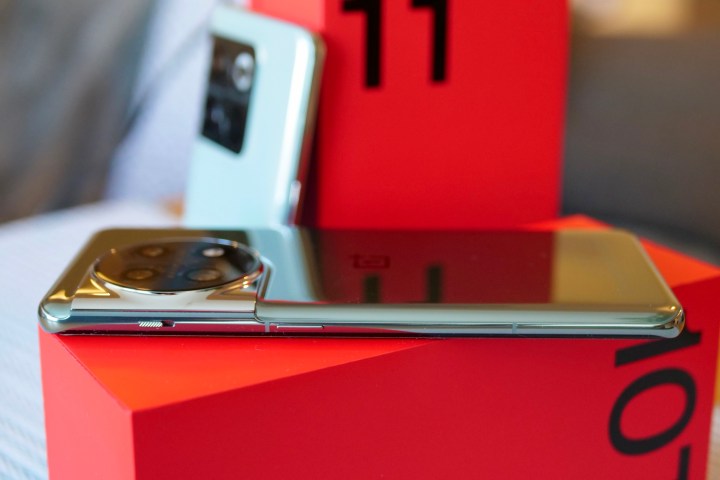
What about updates for the future? The OnePlus 11 is the first device to be covered by OnePlus’ recent commitment to provide four major OxygenOS updates and five years of security updates. The OnePlus 10T is not covered under this new policy and instead will receive three years of OS updates and four years of security updates.
The update package alone makes the OnePlus 11 the phone to buy here, and that’s before the general improvement from OxygenOS 13. It’s worth pointing out that although OxygenOS has got better on the OnePlus 11, it’s still not the best version of Android on a smartphone. Google’s version of Android on the Pixel 7 and Pixel 7 Pro is superior, and we’d also take Samsung’s One UI over OxygenOS. It’s something worth thinking about if software design, usability, and reliability are at the top of your list.
Winner: OnePlus 11
OnePlus 11 vs. OnePlus 10T: any other notable differences?
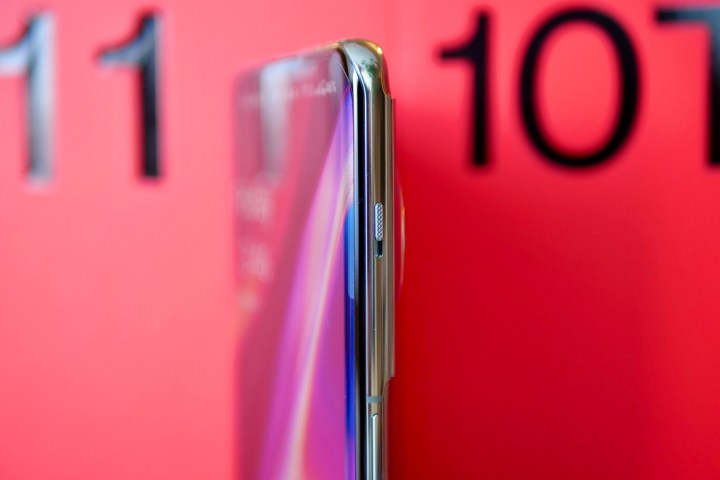
We’ve already mentioned the return of the alert slider, a staple OnePlus feature that was removed from the OnePlus 10T, which to a lot of fans will make the OnePlus 11 more of a true OnePlus phone than anything else. In case you’re new to OnePlus phones, the alert slider is a hardware slider on the side of the phone that lets you switch between silent, ring, and vibrate modes without digging into the phone’s settings. It’s a handy feature, but shouldn’t be considered a reason to buy.
Like the OnePlus 10 Pro, the OnePlus 11’s in-display fingerprint sensor is set an inch above the bottom of the screen, which is more convenient on than the OnePlus 10T, where it is half an inch above the base. It makes the sensor quicker and easier to locate, especially when using the phone with one hand. There doesn’t seem to be any speed difference between them, and there’s face unlock to use as an alternative on both phones.
Winner: OnePlus 11
OnePlus 11 vs. OnePlus 10T: price and availability
When it launched, the OnePlus 10T cost $649; at the time of writing, the OnePlus 10T starts at $549. The OnePlus 11 starts at $699. You’re going to pay more for the OnePlus 11 compared to the OnePlus 10T, but compared to the 10T’s original launch price, it’s not that big of a jump.
Winner: OnePlus 11
Overall winner: OnePlus 11
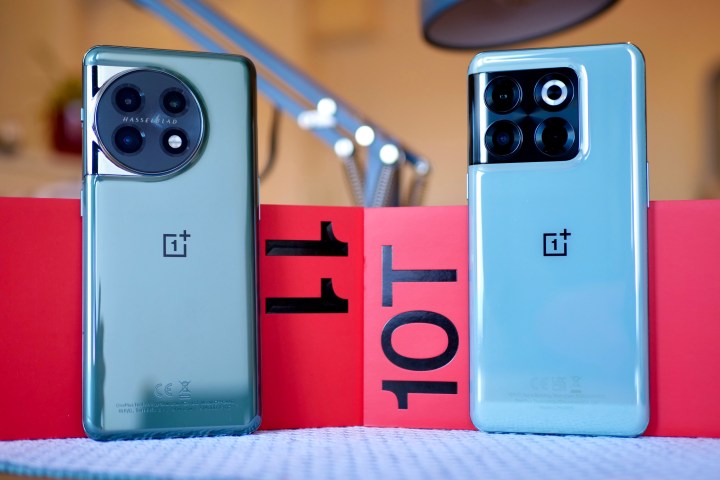
The OnePlus 11 is the winner, and it’s definitely the phone you should choose if you’re considering buying either it or the OnePlus 10T.
It’s superior to the OnePlus 10T in every way, from the materials used, the curved screen, and the latest processor, to the higher specification camera and longer software update policy. The OnePlus 10T disappointed us right from the start, and the OnePlus 11 shows just how poor it really is.
Editors’ Recommendations
Services Marketplace – Listings, Bookings & Reviews
